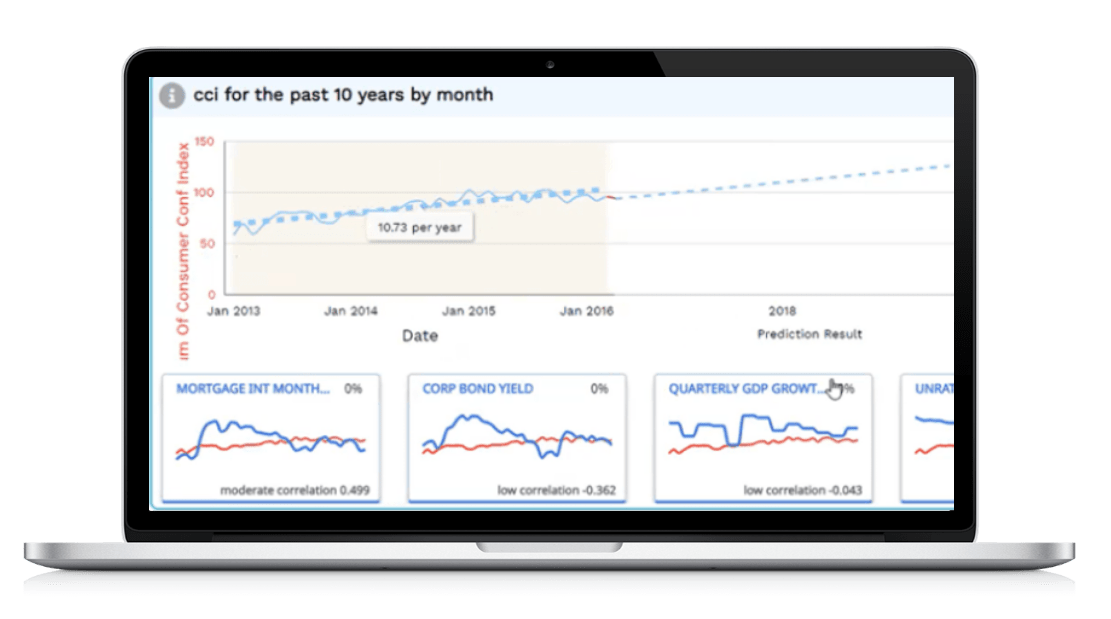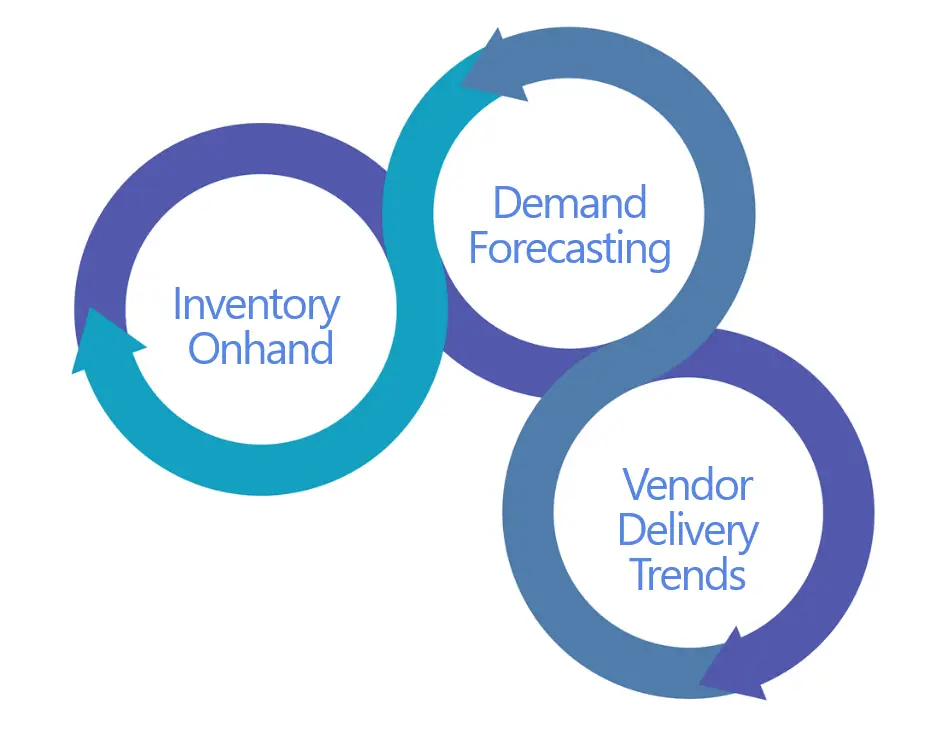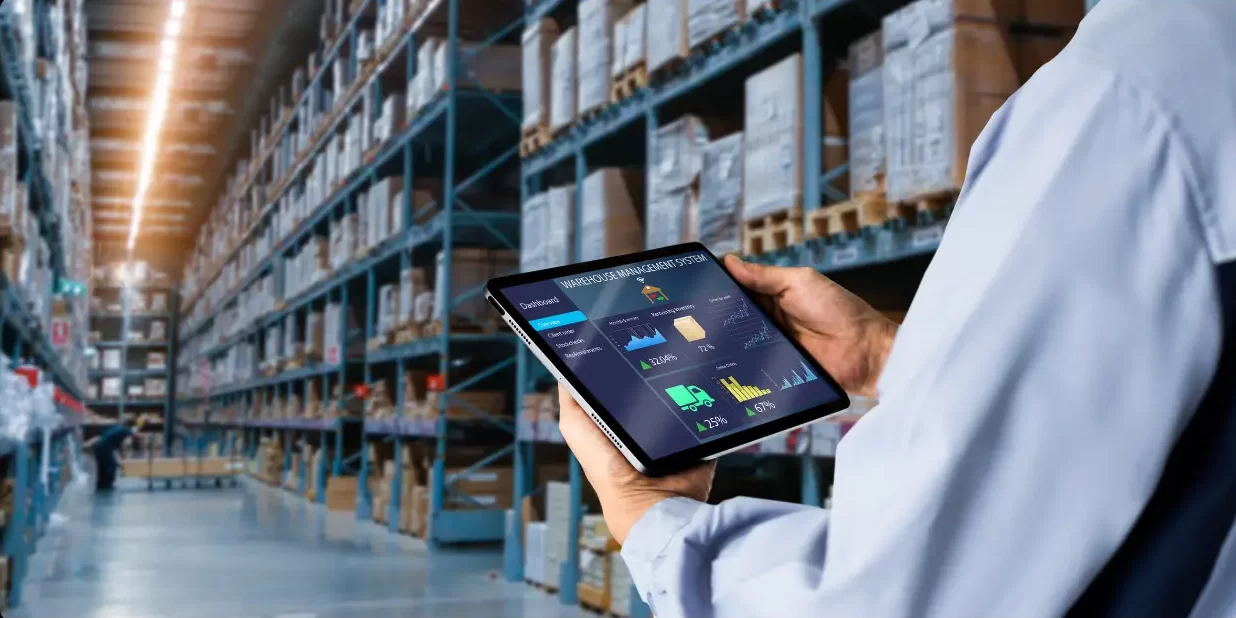Million-Dollar ERP and Still Out of Stock?
How to “Right Stock” With AI-Driven Data Analytics


Speed to Insights Matters
Managing inventory and making smart decisions about stock levels is crucial. If you have stockouts, you’re losing revenue and may be driving customers directly to your competitors to make a purchase. If you overstock, you’re tying up capital in merchandise that could be used elsewhere. In a worst-case scenario, you might be stuck with inventory that never sells.
Despite having advanced ERP systems or demand forecasting software, it remains challenging to get it right, managing proper inventory levels, reorder points, and safety stock. Customers often look at historical data to make forecasts, but fail to take into account current trends and specific circumstances.
This webinar will show you how to overcome the complexity of handling capacity and replenishment planning with no-code data analytics technology that can bridge the gap between sales trend-based forecasting and accurate replenishment planning. Using historical trends, AI and predictive analytics, and input from season managers, you can create better solutions for inventory management. And, instead of waiting for IT to develop solutions or rebuild your ERP solution, you can use natural language Q&A to get more informed answers to make better decisions.

Here's What We See
We see customers who have spent a lot of money buying ERP and advanced planning systems and then get stuck. It takes time to develop the right dashboards and account for nuances in inventory turnover. IT teams are often tied up managing the day-to-day duties and simply don’t have the time or staffing to take on a significant change project.
When you start to combine historical data with predictive analytics to account for other variables, it suddenly becomes a corporate IT project. So, it’s not that you don’t have the tech to drive solutions, but getting your tech to deliver what you need is what gets complex. Even if your IT team has the time, such projects often get low priority compared to other revenue-generating activities. Everything gets stalled and you’re waiting for months to get a better solution designed as more urgent projects get pushed ahead.
So, you rely on historical data and static reorder points. When stock levels hit certain thresholds, reordering occurs at previous levels.
There’s a Better Way
Inventory management and replenishment should go well beyond historical data tempered by intuition. You need to incorporate relevant trends to make more accurate projections and you shouldn’t have to wait a year to implement historical data. Speed to insight is simply more important than surgical precision.


Step One: Keep It Simple
You can work with the IT department to identify subsets of data that matter to your inventory control and replenishment. It might include transaction history, product groups in regions, store or branch locations, and vendors.
By taking this subset and putting it in a data warehouse, you reduce the amount of data that requires analysis. For example if you want to look at how efficient vendors are in delivering goods, you can compare the transaction data versus supplier lead time. The two sets of data tell you when you need to schedule reorder points to bring products in-house.
Step Two: Leverage AI for Predictive Intelligence
Using a combination of machine learning algorithms, linear regression, and large language model AI engines, we can analyze sales patterns for products. Once we have that trending, we can then apply different filters to improve demand forecasting and replenishment accuracy.
Seasoned managers can look at these trends and make adjustments without having to ask for IT support or build complex dashboards. With the right data analytics platform, you can ask questions and create more accurate projections with programming.

For example, you might want to look at historical data and compare it to the last two months of sales. You might notice a general uptick in sales. However, you don’t know what’s driving
Using natural language with IDA, you can isolate this data. Without having to go through lengthy discussions with IT, mapping out requirements, and waiting for a new dashboard to be built, you can ask questions and get answers instantly. Break out sales by product or category. Map sales by region or store. Exclude data during discount periods.
Maybe you had a store shut down for remodeling for several months. This might bring your overall average sales down. Without isolating this information and removing it from your analysis, you might under-order based on historical data. Yet, pulling this information out of the analysis may have shown a significant uptick in sales, indicating you need to increase your replenishment order


This interactive process, without coding, enables you to single out anomalies that impact your historical data. Now, you can bring it all together to make better decisions. You can balance your current inventory with better demand forecasting, coupled with vendor delivery trends to create more accurate reorder points, inventory levels, and safety stock to right-size your inventory – avoiding stockouts and overstock.
Can’t My ERP System Already Do This?
That’s a fair question and the answer is most likely, yes. However, it takes deep experience and coding acumen to get these kinds of data insights. It often becomes an unwieldy project that can take months or years to develop. Then, if you discover there are other anomalies you want to account for or additional filters you want to put on the data, it’s back to the drawing board.
Our solution lets you type or ask questions and get that information instantly. Your staff knows to exclude store 47 because it was closed for repair or that there was a big sale in May that you won’t be repeating. You can quickly filter the data just by asking and get the information you need immediately. By injecting these variables into your data, you can see trends
dynamically in real time for better planning.

Want to see IDA in action?
Get started with digital adoption today.

